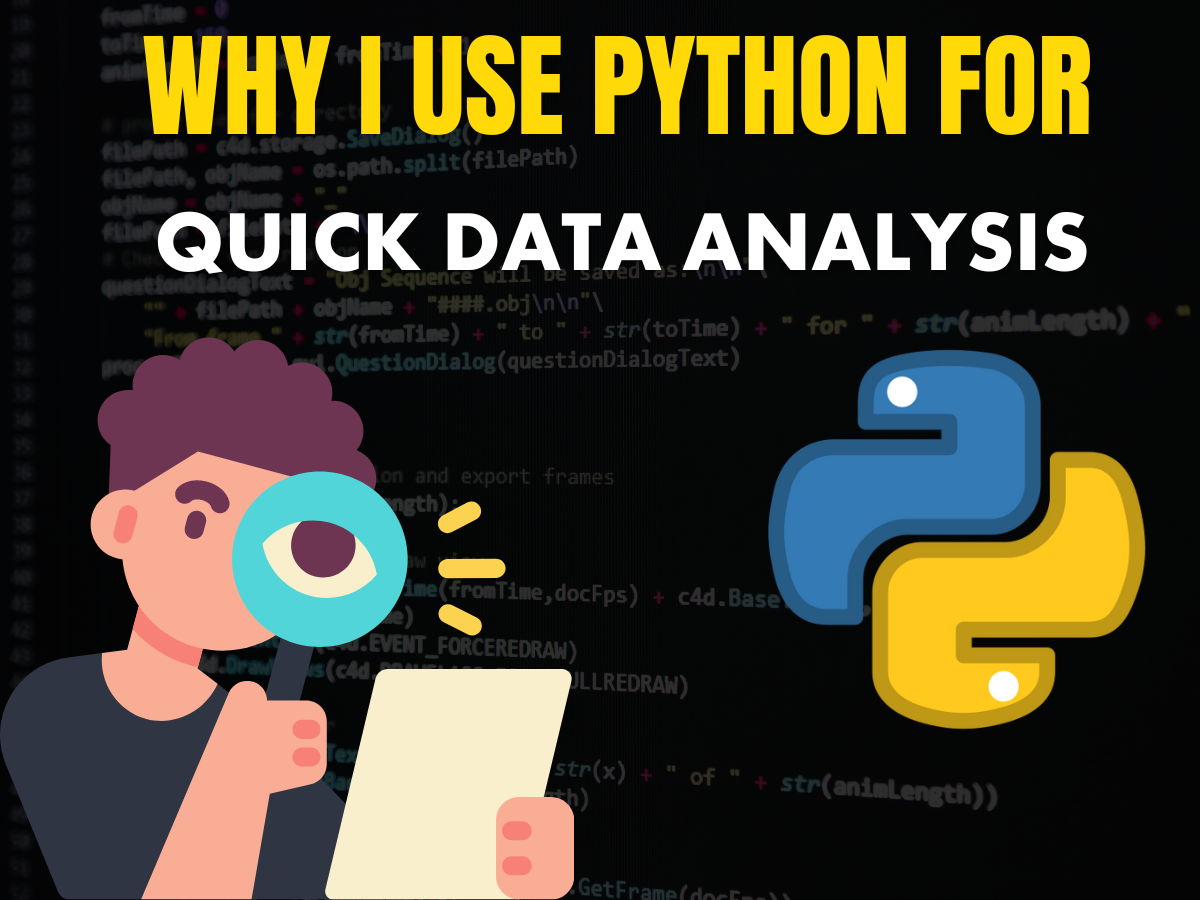First things first, programming is much better than other tools. Similarly, Python programming is one of the most popular for data science compared to Excel and Power BI. At the beginning of my data analysis career, I used Excel and Power BI. But when I learned about Python programming for data analysis, I started using Python for my projects.
Programming allows you to solve all kinds of tasks effortlessly, whereas some tools can hinder you from doing any work. I’ve only used Python in my last three projects, and most current clients offer Python programs to use. Today, in this article, we will explore why Python is important for data analysis, and I will share my personal experiences with you.
Data Collection
Excel: You know Excel is widely used for data collection. When you think about data entry tools, Excel is the number one tool because it offers manual data entry with support for forms. Excel provides data organization support like sorting, filtering, and conditional formatting. When I first started my job, I worked in Excel, so I know it is a very good tool. Excel also provides basic analysis features like functions, formulas, and pivot tables, and you can do visualization with charts and graphs for basic data visualization.
Power BI: Power BI is a powerful business analytics tool. It is robust for collecting data and connects to various data sources like Excel, SQL Server, Oracle, Salesforce, SharePoint, and web APIs. From my personal experience, Power BI is a good tool for non-coders.
Python: Believe me, when I started programming for data analysis, I gained superpowers in the data analysis field. Python is a highly flexible and powerful language for data collection. You can collect data from virtually any source, including web scraping, APIs, databases, and files. Python has some excellent libraries for data collection, and I use Pandas. Really, Pandas is such a good tool for data collection.
Python scripts can be scheduled to run automatically, allowing for continuous data collection without manual intervention. This is a great process for a data analyst.
Excel and Power BI help a lot with data collection, but Python is suitable for large-scale data collection tasks. So, based on my personal experience, when you think about data collection, Python should be your first choice.
Data Cleaning
Data cleaning is a process that ensures data quality and prepares it for analysis. Python is a more helpful data-cleaning programming language than other tools. You need only 8 to 15 lines of code for data cleaning.
But with other data analysis tools, you might need to work in a more typical way. Cleaning data in Excel typically involves several steps to ensure data quality and consistency. The same is true with Power BI, where some processes have to be done to clean the data. But Python is the best way for data cleaning.
In my personal experience, when I used Excel for data cleaning, I faced many problems, especially with large datasets. Excel didn’t provide enough support for big data.
So, for data cleaning, Python offers you a superpower, and you can easily manage your data.
Data Cleaning Steps in Python:
- Handling Missing Data: Identify and handle missing values by dropping, filling, or imputing them.
- Removing Duplicates: Identify and remove duplicate rows in the dataset.
- Data Type Conversion: Convert columns to appropriate data types for accurate analysis.
Data Exploration and Visualization
Data is powerful in the present world. When you analyze data, you need to see your growth, your potential, and more, which requires data visualization. Data visualization is a key aspect.
In my last project, my boss asked me about data structure. Data structure helps in identifying underlying patterns, trends, and relationships within the data. This is a part of data analysis.
Why Python is Better for Data Visualization
Python is considered a strong choice for data visualization. It has a rich ecosystem of libraries for data visualization. I use Python libraries like Matplotlib and Seaborn. These libraries are very user-friendly, and I think when you use these Python libraries, you don’t need other tools. At the start of my career in data analysis, I used Power BI, but now I think when you work with big data, Python should be your first choice.
Python’s visualization libraries provide extensive customization options, allowing users to tailor visualizations to their specific needs. I think this option is the best for every data analysis project.
We discuss three main points about data analysis: data collection, cleaning, and visualization. Each part is easy to do with Python, making it an excellent choice for data analysis.
As a data analyst, I have found Python to be an invaluable tool in my work, surpassing traditional tools like Excel and Power BI in several ways. Python offers significant advantages in three main areas of data analysis: data collection, data cleaning, and data visualization.
Data Collection: Python offers unmatched flexibility compared to Excel and Power BI. It allows you to collect data from various sources like web scraping, APIs, and databases using libraries such as Pandas. Automated scripts enable continuous data collection without manual effort, making Python perfect for large-scale tasks.
Data Cleaning: Python simplifies data cleaning with minimal code, handling missing data, removing duplicates, and converting data types efficiently. Unlike Excel and Power BI, Python handles large datasets seamlessly, ensuring high data quality.
Data Visualization: Python’s libraries like Matplotlib and Seaborn provide extensive customization options for tailored visualizations. Compared to Power BI, Python is more suitable for big data projects, offering superior visualization capabilities.

